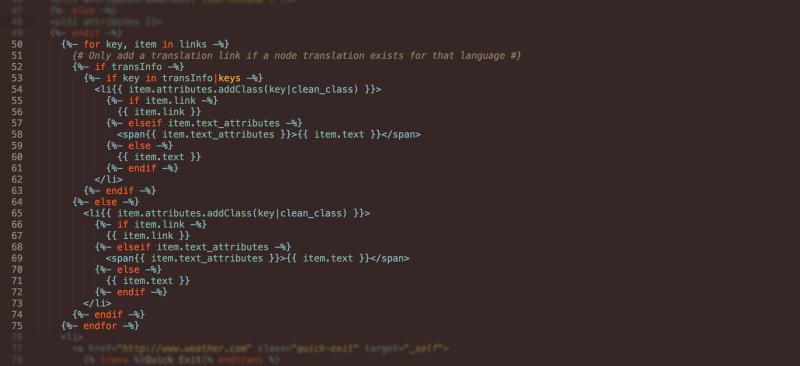

In the realm of site content, there are many levels of granularity and control: As before, the website itself has a default language. And that's just the beginning, because as site builders and maintainers work within a Drupal 8 site, they can have the field labels, help information, and other configuration text be displayed in any chosen language. Drupal site builders can perform the installation process in one of 100 languages (as of this writing), from Afrikaans to Welsh. The multilingual work centered on two broad categories configuration and content. Much of this successful effort was encompassed by the Drupal 8 Multilingual Initiative, which is one of the seven major Drupal 8 core initiatives.


Lastly, it greatly increases the ease – and thus the odds – of developers and designers choosing to embrace more natural languages when building their new websites. Baking the internationalization into Drupal core avoids the problems associated with using contrib modules that may not be receiving adequate support, and it avoids the extra effort necessary to get a large number of modules to work smoothly together. The multilingual capabilities that in Drupal 7 would require a lot of contrib modules, can now be done in Drupal 8 using only four, and all of them are in core. Now We're Talkingįortunately, Drupal 8 dramatically improves support for internationalization. But they don't all play well together, so you often would be compelled to use the Rules module, assuming that it is sufficient to build the necessary bridges for your project. Yet that's only the beginning of the arduous process, because to achieve any given feature, you may have to choose from more than one possible module. Presenting page content in other languages requires installing and configuring up to two dozen or so additional modules not included in the Drupal core installation.
#Drupal 8 language switcher install#
The core code allows one to install the software in another language, but that requires performing multiple steps. In the world of Drupal, support for non-English languages was essentially an afterthought in versions up to and including the penultimate version – and the same can be said for countless other CMSs, even their latest releases.ĭrupal 7 offers limited support for languages other than English. Support for multiple human languages is more important than ever, as the web becomes an ever increasing global platform for commerce and culture.Ĭontent management systems (CMSs) such as Drupal have significantly reduced the cost in time and effort for rolling out a multilingual website. Natural languages are critical components of human culture, and issues arise when people fluent in various natural languages try to use websites that assume the visitor understands only one language, typically English.


 0 kommentar(er)
0 kommentar(er)
